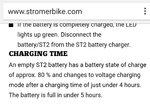Phildirt
New Member
So I went for a ride today back in Glacier Park and tried to better my self from last weekend. 2450ft. gain
in 13.4 mi 90% in eco mode. I watched the battery level closely and thought I would turn around at one bar,
well I didn't and it just shut off. My question is I hope I didn't hurt the battery taking down to nothing (the bike is only 2 wks old). I usually recharge @ 50 to 60%.
in 13.4 mi 90% in eco mode. I watched the battery level closely and thought I would turn around at one bar,
well I didn't and it just shut off. My question is I hope I didn't hurt the battery taking down to nothing (the bike is only 2 wks old). I usually recharge @ 50 to 60%.

